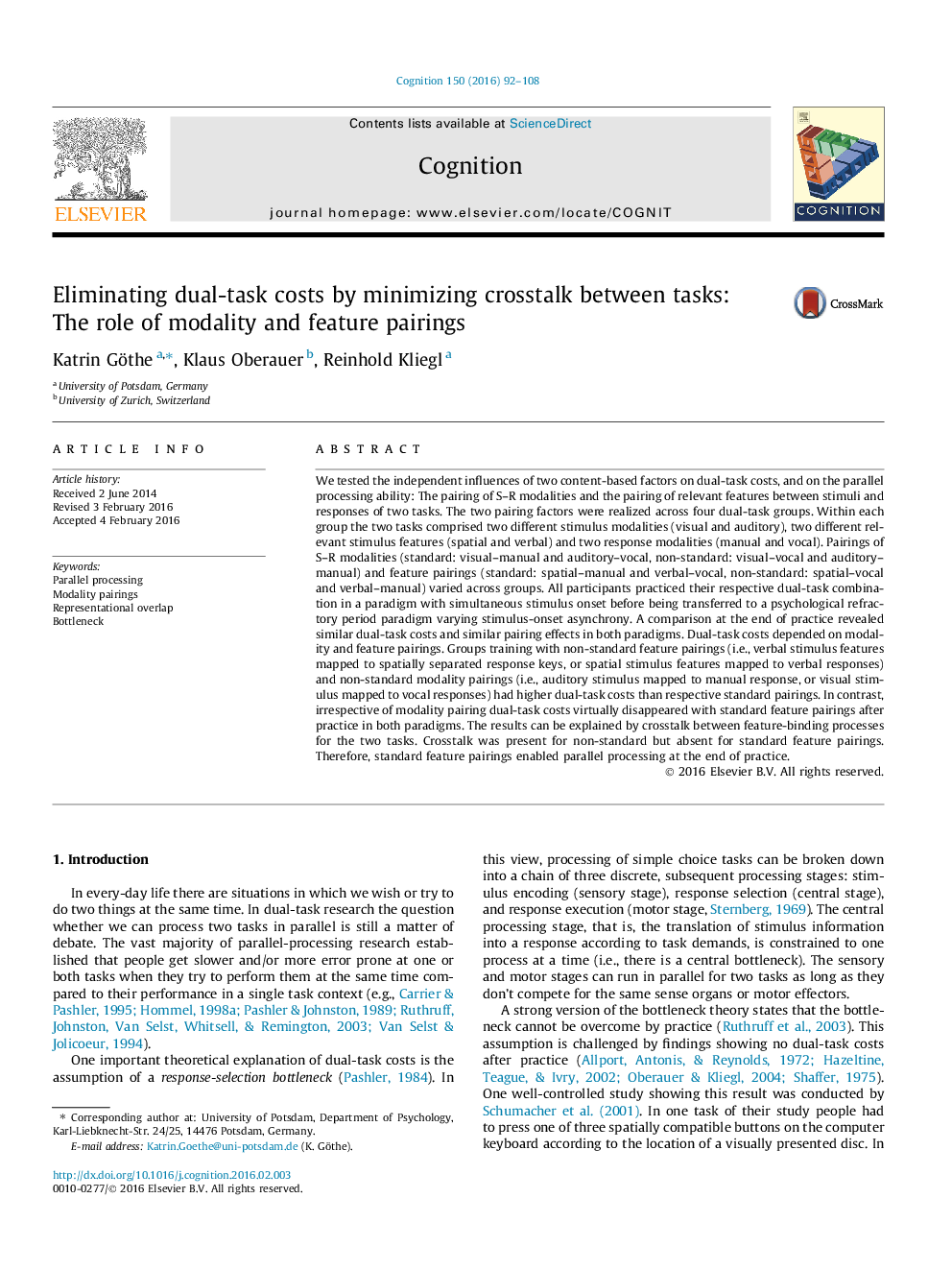| Article ID | Journal | Published Year | Pages | File Type |
|---|---|---|---|---|
| 7286228 | Cognition | 2016 | 17 Pages |
Abstract
We tested the independent influences of two content-based factors on dual-task costs, and on the parallel processing ability: The pairing of S-R modalities and the pairing of relevant features between stimuli and responses of two tasks. The two pairing factors were realized across four dual-task groups. Within each group the two tasks comprised two different stimulus modalities (visual and auditory), two different relevant stimulus features (spatial and verbal) and two response modalities (manual and vocal). Pairings of S-R modalities (standard: visual-manual and auditory-vocal, non-standard: visual-vocal and auditory-manual) and feature pairings (standard: spatial-manual and verbal-vocal, non-standard: spatial-vocal and verbal-manual) varied across groups. All participants practiced their respective dual-task combination in a paradigm with simultaneous stimulus onset before being transferred to a psychological refractory period paradigm varying stimulus-onset asynchrony. A comparison at the end of practice revealed similar dual-task costs and similar pairing effects in both paradigms. Dual-task costs depended on modality and feature pairings. Groups training with non-standard feature pairings (i.e., verbal stimulus features mapped to spatially separated response keys, or spatial stimulus features mapped to verbal responses) and non-standard modality pairings (i.e., auditory stimulus mapped to manual response, or visual stimulus mapped to vocal responses) had higher dual-task costs than respective standard pairings. In contrast, irrespective of modality pairing dual-task costs virtually disappeared with standard feature pairings after practice in both paradigms. The results can be explained by crosstalk between feature-binding processes for the two tasks. Crosstalk was present for non-standard but absent for standard feature pairings. Therefore, standard feature pairings enabled parallel processing at the end of practice.
Keywords
Related Topics
Life Sciences
Neuroscience
Cognitive Neuroscience
Authors
Katrin Göthe, Klaus Oberauer, Reinhold Kliegl,
